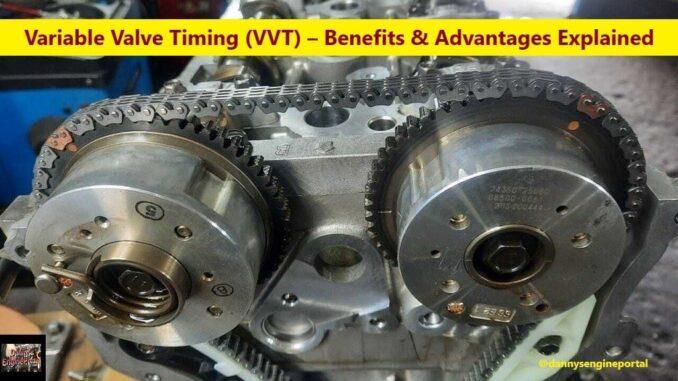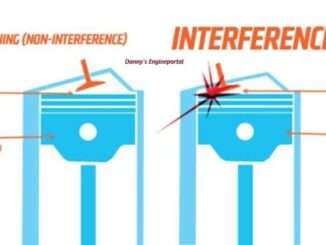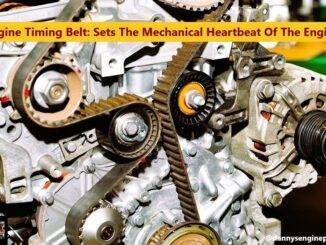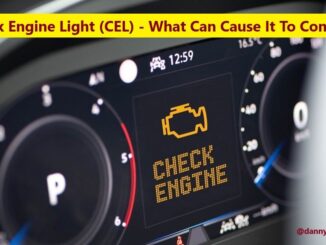
So, Variable Valve Timing (VVT) is a technology that’s used on many late model engines.
And, is designed to improve fuel economy, idle smoothness, emissions and performance.
Variable Valve Timing (VVT) allows valve timing to change with engine (RPM), unlike standard fixed cam drives that never change.
So, there are many different types of Variable Valve Timing (VVT), but they all do basically the same thing.
Variable Valve Timing (VVT) technology controls three key characteristics, of the intake and exhaust valves:
- Valve timing. The points in the piston’s movement, at which the valves open and close.
- Valve duration. How long the valves stay open.
- Actual valve lift. How much the valves physically open.
Valve timing determines when the intake and exhaust valves open. How long they remain open, and when they close.
In turn, this affects things like:
- Intake and exhaust flow
- Intake manifold vacuum
- Running compression
- Volumetric efficiency
- Throttle response
Also, how much horsepower and torque the engine develops, at any given (RPM).
Traditionally, valve timing has always been fixed. Once set by the alignment of the timing marks, valve timing does not change. The problem with fixed timing is that it always ends up being a compromise.
So, there are valve timing settings that produce the best idle, intake vacuum and low (RPM) torque. And, ones that produce the best mid range power or high speed power. But, they are not the same. So, advancing valve timing improves idle quality and low (RPM) torque.
While, retarding the valve timing improves high end power. Ideally, valve timing should change with engine speed and load, like ignition timing does. And, that’s why we now have, Variable Valve Timing (VVT).
Because, with a standard cam drive (belt, chain or gears), that is not possible. So, valve timing is usually set to favor everyday drivability (low to mid range torque). Today, most (VVT) systems have all but eliminated (EGR) valves.
Variable Valve Timing (VVT) provides a way of getting around the limitations of fixed timing. And, (VVT) allows valve timing to change in response to engine speed and load.
This provides a much wider power band and better overall performance. Valve timing can be advanced at low (RPM) to improve idle quality, throttle response and low speed torque. And also, made late at higher engine speeds, to increase peak horsepower.
So, the exhaust valves, do not close until the intake valves have been open for a while. As a result, some of the exhaust gases, are recirculated back into the cylinder. And, helps to eliminate the (EGR) valve. This all happens at the same time, as the new air fuel mix enters. Because, part of the air fuel mix, is replaced by exhaust gases, less fuel is needed.
So, the exhaust gas is mostly, non combustible gas, such as (CO2). As a result, the engine runs properly, at the leaner air fuel mixture, without failing to combust.
But, As Great As Variable Valve Timing (VVT) Is, It Is Also Vulnerable To Some Problems.
On Variable Valve Timing (VVT) systems, oil pressure is used to actuate the cam phaser. So, oil quality, viscosity and contamination problems, can affect the operation of the phaser. Also, lack of oil from oil consumption.
So, if the phaser does not receive:
- Adequate oil pressure
- The oil is the wrong viscosity (too thick or too thin)
- The oil is dirty
Then, it may prevent the phaser from working properly.
As a result, hurting engine performance, fuel economy and emissions. Furthermore, such faults will often, turn on the Check Engine Light (CEL). And, set a Variable Valve Timing (VVT) related (DTC).
Variable Valve Timing (VVT), Diagnostic Trouble Code (DTC)s:
- P0010….A Camshaft Position Actuator Circuit Bank 1
- P0011….A Camshaft Position Timing Over-advanced or System Fault Bank 1
- P0012….A Camshaft Position Timing Is Too Late Bank 1
- P0013….B Camshaft Position Actuator Circuit Bank 1
- P0014….B Camshaft Position Timing Over-Advanced or System Fault Bank 1
- P0015….B Camshaft Position Timing Is Too Late Bank 1
- P0020….A Camshaft Position Actuator Circuit Bank 2
- P0021….A Camshaft Position Timing Over-Advanced or System Fault Bank 2
- P0022….A Camshaft Position Timing Is Too Late Bank 2
- P0023….B Camshaft Position Actuator Circuit Bank 2
- P0024….B Camshaft Position Timing Over-Advanced or System Fault Bank 2
- P0025….B Camshaft Position Timing Is Too Late Bank 2
How Do I Reset The “Check Engine Or Service Engine Soon” Light?
First, any fault in the Variable Valve Timing (VVT) system, will set a (DTC).
So, after you’ve properly diagnosed and fixed the problem that triggered the Diagnostic Trouble Code (DTC). Then, you can reset or clear the Check Engine Light (CEL), a number of different ways:
- You can just drive it and after a certain number of driving cycles, it will just clear by itself.
- Disconnect your battery, turn on the headlight switch for about five to ten minutes, and reconnect the battery. But, will likely result in, you losing your radio presets and perhaps, some other small things like that.
- Most, if not all scan tools, have an option to clear or reset the (DTC)s. Without the use, of any tools or touching the battery.
Back in the day:
- The engines intake and exhaust valves, opened a specific amount.
- At a specific point, in the four stroke cycle.
- And, for a specific amount of time.
But today, many engines can change when their valves open, how much they open and for how long.
In Summary: Variable Valve Timing
Above all, these (VVT) systems are complex. So, all car owners should know that it’s essential you change your engine oil, at the suggested intervals. Also, make sure you are using, the correct weight and viscosity, that’s in your owner’s manual. Above all, the solenoids that control Variable Valve Timing (VVT) systems, can easily fail, by improper lubrication.
Thank You !!




